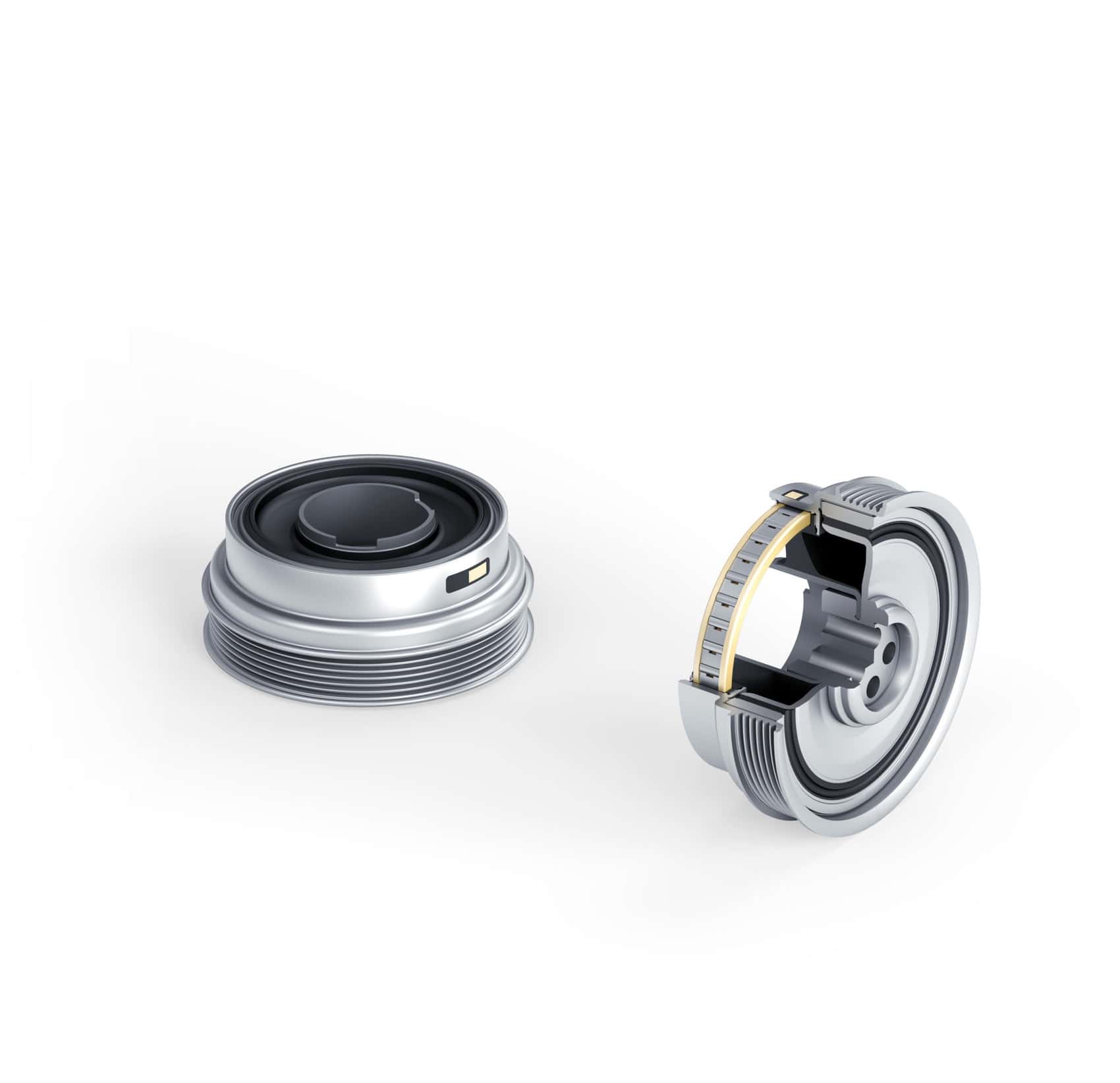Darmstadt, 25. October 2017 |
Overrunning damper isolator pulley reduces consumption and emissions by up to one percent
The efficient integration of auxiliaries in the belt drive is just as important as internal engine measures for the reduction of CO2 and consumption levels. Low belt tension can lead to significant improvements in efficiency here. However, this also involves the risk of belt sagging, which needs to be prevented at all cost. Vibracoustic has now developed a solution for this: the overrunning damper isolator pulley prevents sagging and flapping of the belt and thus ensures consistent belt tension in every driving situation.
Intelligent force management
Low capacity, often just three cylinders, very high peak pressures, and start-stop systems are typical features of modern downsizing engines. While the performance of these units has now reached a high level, maximum harmonization of the ensuing forces and vibrations on start-up of the engine presents a constructional challenge. During the very first second of engine start-up, huge forces need to be controlled at near-idle speeds. In addition to impacting on comfort, these disharmonies also cause high stress on the auxiliaries in the belt drive.
Low consumption, lower wear
Many manufacturers focus on reducing belt tension, as the reduced friction losses across all speed ranges can result in consumption and CO2 reductions of up to one percent. Vibracoustic initially designed an isolator pulley with an additional one-way clutch function for the three-cylinder engine of a large German automotive manufacturer, a solution which would later also be used for four-cylinder engines. This is generally suitable for all gasoline and diesel engines.
Optimal tension in every load state
The one-way clutch is closed during regular driving operation. However, in the case of any delay in the rotation of the crankshaft, the one-way clutch opens, enables motion, and prevents “re-turning” of the auxiliaries. The V-ribbed belt consequently remains adequately tensioned in each load state, even in the case of low pretension. The one-way clutch function enables the forces impacting on the belt on start-up of the engine to be significantly reduced.
Patented combination
The core components of the design include a metallic hub which is connected to the front of the crankshaft and accepts the flux of force. An elastomer spring enables the isolation function. A metallic outer ring is enclosed around this clutch, serving as the inner running surface of the one-way clutch. Two cage structures in which the clamping elements are connected ensure the secure positioning of the one-way clutch. The outer ring of the one-way clutch then represents the connection to the pulley, through which the V-ribbed belt for the auxiliary drive runs. There is no metallic connection between the one-way clutch and the crankshaft with this design. This patented combination from Vibracoustic offers considerable acoustic benefits for the entire system.
Potential for further applications
Variants of the system can be used for gasoline and diesel engines, while application in hybrid drive systems in various different vehicles classes is also possible. The overrunning damper isolator pulley can thus further improve the efficiency of hybrid vehicles.

